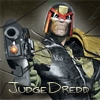Hortlund
Posts: 2884
Joined: 10/13/2000
Status: offline

|
quote:
ORIGINAL: pod_1
Like "benway9" I too like to know how different the HOI2 is because I hated the original HOI.
The difference between HoI and HoI2 is much bigger than the difference between UV and WITP. HoI2 is a completely different game.
Alright, lets see
1) The map is more detailed, more provinces were added. The map is divided into areas (these are "under the surface" in normal map-mode, but you can click on a button to display these areas. These areas are important for air and naval combat, but more about that later).
2) New combat model for land units. In HoI1 your units walked into another province, and when they arrived combat would start. In HoI2 there is a new system called "movement is attack" meaning that combat will start right away when the unit recieves orders to attack into another province. So you will be fighting "between" the provinces, or you move and attack at the same time.
3) Brigades, many more models like armored cars, heavy tanks, self-propelled artillery or tank destroyers. These brigades can be moved between divisions. So you can detatch a brigade from one division, and reattach it to another.
4) New combat model for naval combat. Your ships now fight historically. There are three types of ships. Capital ships (BB,BC,CV), screens (CA,CL,DD) and submarines. To form an effective taskforce, you will need a good mix of screens and capital ships. At the start of a naval combat, each fleet gets a position value determined (0-100%. Doctrines and skill-levels of leaders affect this.) Each hour, this position may move up or down, depending on several factors. Various ships have different distances where they may fire upon others. A Carrier with an air group will have superior range to all, while a Battleship's guns reach much further than a destroyers. This distance changes during the combat, where doctrines and skillfull leadership rules supreme. Ships have a set target they fire upon, which does not change unless positioning is bad. If the opponent have better position or more screens or is more lucky, you'll most likely target his screens first. Extremely bad positioning at night may even cause friendly fire.
5) New order model for air and naval units. Instead of the micromanagement of HoI1, in HoI2 you give "standing orders" to your air/naval units. This is based on the area-model described in 1). Basically you will tell your fighters to do air superiority mission over the Ruhr area (3-5 provinces). You will choose parameters for the mission (fly day or night or both, startdate for mission and enddate for mission, and how much losses to accept before standing down for rest&refit).
So, for example, you can take a fighter unit, order it to fly air superiority over the Ruhr area (to protect the industry there) frmo january 1940 to january 1941, to fly both night and day, but to stand down when it is at 30% strength. You can then ignore that area of the map. The fighter unit will constantly patrol the area, and attack any enemy bombers it happens upon. Same with a naval bomber...order it to patrol a sea area, and it will do just that, for as long as you want. Same with all air units. Tell them their mission, and tell them where to do it, and how much losses to accept. Same with naval units. Order them to patrol a sea area looking for enemy ships, order them to raid convoys in a sea area, order them to shore bombard or whatever. There are many more mission types than these naturally.
6) New technology model. Instead of the research in HoI1 which could be kind of tedious with all the micromanagement, you get a completely new model in HoI2. You have tech teams, built around historical companies or characters. As germany for example, you will have Messerschmitt, Krupp, Porshe etc. These teams will have a skill level between 1-9, and certain areas of speciality. Thus Messerschmitt will be good at research related to aircraft etc, while Porshe will be good at research related to tanks. Every nation has a given number of "research slots" depending on the size of the economy of that nation, for example Germany will have 5, Denmark will have 1. You assign a team to a slot, and tell them what to research (basic fighter, basic light tank, advanced machine tools, basic anti-tank brigade etc etc etc). The team will start researching, and "under the hood" the team will research all the components for a fighter for example (such as 7,92mm MG, basic airframe, advanced avionics, etc etc).
7) New trade model. No more world market. You have to strike individual deals with individual nations.
8) Much more advanced diplomatic model with more options. Some multiplayer games will turn into diplomatic struggles. For example, I've seen games where the pre-war years were spent furiously building alliances. UK and Germany spent much of their economy on influencing future allies (diplomatic actions cost money, you recieve money depending on your domestic policies, and your economical slider settings). In 1939 war started because Russia (me) attacked Persia, because Persia had joined the axis, and I could not accept that.
9) Changes to upgrades and reinforcements. You no longer click on what unit to upgrade or reinforce. This is handled via slider settings in the economy/production-screen.
10) Changes to partisans, more changes to combat (special combat events), new units, new interface, new concepts (Supply efficiency, suddenly the advance through Russia will become a sluggish crawl due to the strains on the supply organization etc), etc etc etc. I realize now that the changes are more than I can type up here and now.
If you have any questions, fire away.
_____________________________
The era of procrastination, of half-measures, of soothing and baffling expedients, of delays, is coming to a close.
In its place we are entering a period of consequences..
|
 Printable Version
Printable Version


















 New Messages
New Messages No New Messages
No New Messages Hot Topic w/ New Messages
Hot Topic w/ New Messages Hot Topic w/o New Messages
Hot Topic w/o New Messages Locked w/ New Messages
Locked w/ New Messages Locked w/o New Messages
Locked w/o New Messages Post New Thread
Post New Thread